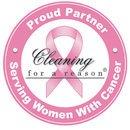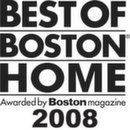Steps to Organizing Your Entryway
The entryway is the welcome mat of your home. From the small mudroom to the large and open foyer to the narrow
Keeping your entryway organized and tidy is easier than you think.
entry hall, entryways are how you greet your guests and how your home greets you. Your entryway may be large or you could have a small entryway, but no matter what shape or size your entryway happens to be, you should make an effort to keep your entryway clean and tidy -- for visitors and for your family.
Every entryway shares the same organizational challenges: the elements of the outdoors come indoors through the entryway. This means there are probably discarded outerwear (like muddy rain boots) and other items scattered about your entryway. Keeping your entryway tidy, clean and organized means finding a home for all these discarded items as well as developing a plan for maintaining a clutter-free entryway. The following article from My Simpler Life offers some great advice for organizing the entryway and a step-by-step approach to decluttering your entryway.
Some people have mudrooms where there is a lot of space so you can implement most of these suggestions. Others live in a small apartment and only have room for a few of these suggestions. There are many space saving entryway ideas out there.
This is definitely an area where organizers are a big help, but first it needs to be decluttered.
Steps to Organizing and Decluttering the Entryway
Step 1: Decide on the purpose
What is the function of this room? Do you have what you need to have it fulfill its purpose? What is the vision you have of this room? What has to go, to achieve this vision? List what things will be in this room. And think of ways to house these better. Do you have furniture elsewhere that will would make this room more functional? Measure your space before you buy anything.
Step 2: Declutter the area
Throw out any trash laying around. Put out of season things like gardening supplies or outdoor sports equipment elsewhere. Things that the kids no longer need or use can be given away. Look around the room – is everything either laundry area or landing area type things like shoes, backpacks, coats? Rooms like this can become a catch all. Is anything in this area unused or really ugly? What else can you declutter?
Step 3: Clean it
Depending on your style you may want to take just about everything out to do a good cleaning. Or for the extremely time limited, do a quick wipe down and sweep.
Step 4: Coats, hats, gloves, shoes
We don’t have a coat closet so our coats are hung on hooks. Where will your coats go? For hats and gloves, each person can have their own bin. Or a cute holder with clothespins can hang gloves to dry, especially if the kids play in the snow often.
We take off our shoes when we enter the house to make things cleaner. We used to just toss them, but ended up with a big pile of shoes. Now we have a wooden cubby system where each family member gets a couple of cubbies for their shoes. (The rest are in our rooms.) It was adjustable so we have a tall spot for a pair of work boots and flip flops can go in the smaller sections. There is an extra skinny section on top that we put things like flashlights, folded up umbrellas and baseball caps.
Since we live in Michigan a plastic rack for snowy boots is a must.
If you have the room a bench either over the shoes or a chair/ottoman near the shoes is helpful so you don’t have to do the one legged dance as you put on your shoes. (If you use an ottoman, you can get one with storage in the middle. Bonus!)
Step 5: Backpacks and school stuff
You can put backpacks on hooks as well. We did that until the kid’s backpacks became too heavy with books as they got older. Now they take them to their rooms where they do their homework. A shelf on the wall is good for lunchboxes, water bottles, etc. Or if the kids’ bins are big enough (like below) they can put them there. Do you have a spot for a briefcase or purse if you want one?
Step 6: Sports equipment and other activities
A trash can for baseball bats, balls, etc will keep those in order. You can hang up tennis rackets on the walls. Same with skiis. (This suggestion is more useful for people that have a mudroom or porch, not for a small entryway.) We have a small bookshelf on our porch for remote control cars, a bucket of croquet balls, and smaller outdoor toys that tend to get thrown around. For sports equipment that is taken to school or training, a duffel bag for each sport and each kid will make it easier than trying to use one bag per kid and changing things out each time. My mother in law made a great bag with soccers on it for my son where he kept all his soccer equipment. These can also be hung on hooks on the wall.
I have tote bags for my things as well – Kid’s Hope, Sunday School, a health group, etc. We also have a tote bag for the library books. My tote bags are kept in hooks in my office since we don’t have room in our entryway for them.
Step 7: Keys
Have a bowl or rack to put your keys so you aren’t hunting for them when you leave. We put our cat leash there as well.
Step 8: Paper
Where do you throw the mail, school papers, etc. that you get each day? If you throw them in the entryway you might as well have a place for them. Have an in/out slot on the wall for incoming mail and outgoing signed permission strips. If you throw paper elsewhere, put an in box/out box there instead. A heavy basket is good for magazines here, in the living room or whereever you like to keep your magazines.
Step 9: Trash
A wastebasket in every room of the home keeps garbage from getting left all over. The entryway is a great place to put a trash can so people can empty their pockets or purses. And let go of junk mail right away.
Step 10: Mirror
A mirror to do a quick face check before you go out is helpful, but not essential.
Step 11: Do not forget list
On the door or next to the door tape a list of things you don’t want to forget: backpack, lunch, purse, library books, etc. Scanning the list before you go can save you lots of time driving home. Have the kids look at the list before they leave as well.
Step 12: Anything else?
Is there anything that you use the room for? As you can see, it is a matter of using the room for its purpose and making sure everything has a spot so it isn’t a mess of things thrown around. And you don’t have to buy entrance organizers. You probably have things around your home you can use. (Though our shoe cubby has been so helpful.) Think of the things that were in the entryway that didn’t belong. How did they get there? Maybe they actually do belong there? You want to organize according to your lifestyle not opposed to it. Is this the place where the messageboard/control center is going to be? Will you need a place for gardening supplies come spring? Is there a place for everything?
Now: Maintain
Places which have a mishmash of different purposes can be difficult to keep looking clean. As the kids get home from school or you get home from work, check to see that everyone has put their things in their spots instead of throwing them onto the floor. If not, they stop what they are doing and fix it. Eventually they will get tired of that and put them away on their own.
Have mail time to go through that mail.
Do a quick sweep at dinner time (And have floor mats outside the door and inside the door to keep more dirt out.)
After shopping, create the habit of putting things away before sitting down to rest.
Then weekly as a family do a quick pick up. It probably won’t take more than 5-10 minutes. And then someone can mop. Entryways, mudrooms and laundry rooms don’t always get on our weekly cleaning list. But, they may be the messiest parts of the home.
Equipped with a solid plan for organizing and decluttering the entryway, you will find it easier to maintain a tidy entryway than you thought. Whether your entryway is in the front or the back of your home, whether your entryway is large or small, maintaining a clutter-free entryway will make a favorable impression on visitors and function as a comfortable transition area to the living areas in your home.







